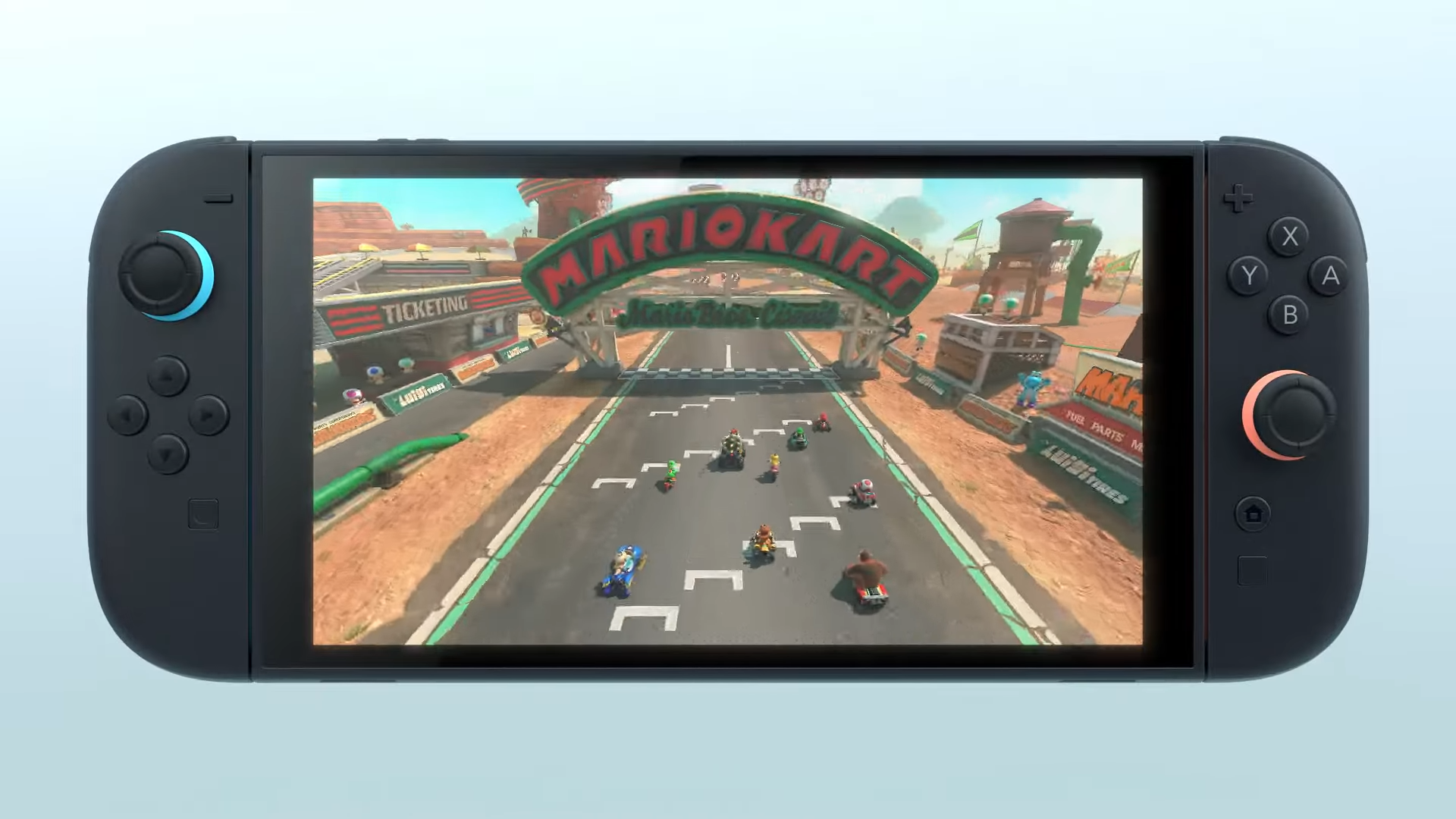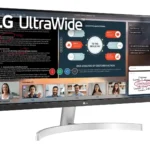Nintendo has announced exciting news for gamers looking forward to the Switch 2. According to recent information, the upcoming console’s game-key cards will not be tied to specific Nintendo accounts. This means players can freely borrow, trade, and resell their physical game-key cards just like traditional game cartridges. Nintendo’s Tetsuya Sasaki confirmed this consumer-friendly approach, stating that “key cards will start up on the console or system that it is slotted into, so it’s not tied to an account or anything,” as reported by The Verge.
This decision maintains the physical game ownership model that many players value, despite the industry’s shift toward digital-only experiences. The key cards will function on any Switch 2 system, preserving the ability to share games with friends or sell them when you’re finished playing. This approach differentiates Nintendo from competitors who have increasingly moved toward account-locked digital purchases.

How Nintendo’s Game-Key Cards Work
Nintendo’s new “game-key cards” for the Switch 2 mark a major shift in how physical games will function. Unlike traditional cartridges that contain the entire game data, these key cards serve as digital licenses. When inserted into a Switch 2 console, the system will initiate a one-time download of the full game from Nintendo’s servers. After that, the game can be played offline, but only while the key card remains inserted—essentially acting as proof of ownership.
Crucially, these game-key cards are not tied to a Nintendo account or a specific console. That means players can freely lend, trade, or resell the cards, returning some of the flexibility and physical ownership that has been eroded by the rise of digital-only games.
Borrow, Trade, and Resell – A Return to True Ownership
Nintendo confirmed that game-key cards are designed to be transferable. You can let a friend borrow a card, and they’ll be able to use it to download and play the full game on their own system, just like you did—no account-linking or DRM hassles. Once the card is removed, access to the game ends, unless it’s reinserted.
This functionality also enables a robust second-hand market, with used game-key cards working the same way as new ones. Unlike typical digital purchases that are locked to your account and can’t be shared, these cards offer a hybrid between physical ownership and digital convenience. It’s a system that benefits collectors, casual players, and anyone who misses the days of game lending without restrictions.
Why Game-Key Cards Exist: Addressing Game Sizes and Production Costs
There’s also a technical and financial reason behind this shift. As game file sizes continue to grow—some hitting 100GB or more—it’s becoming more expensive and impractical to manufacture cartridges that can store entire AAA titles. The Switch 2 reportedly supports up to 64GB physical cartridges, but for larger games, downloading will be the norm.
By using game-key cards, Nintendo can reduce manufacturing costs while still giving players a tangible product to buy and share. It also helps ensure all players are working with the most up-to-date version of a game, since downloads typically include the latest patches and improvements.
Offline Play Still Supported — With a Catch
Once the game is downloaded, you don’t need to stay connected to the internet to play. However, the game-key card must remain in the console. Think of it like a digital key: it unlocks the content and verifies your right to play it, but it doesn’t store the content itself.
This is great news for players who prefer to play offline or travel with their systems. Just make sure you have the card with you—if it’s not inserted, the game won’t boot, even if it’s installed.
A Middle Ground Between Physical and Digital
Nintendo’s approach seems to strike a balance between the flexibility of digital libraries and the benefits of physical media. Players can still own something tangible, share it with friends, or sell it later—all while avoiding the bulk and limits of massive cartridges.
It’s a bold move that could set the tone for how other companies handle game distribution in the coming years. For Nintendo fans, it might just be the perfect blend of nostalgia and next-gen convenience.
Key Takeaways
- Switch 2 game-key cards work on any console without account restrictions, enabling borrowing and reselling.
- Physical game ownership remains intact despite industry trends toward digital-only distribution.
- This consumer-friendly policy maintains traditional gaming practices while adapting to new technology.
Overview of Nintendo’s New Policy for Switch Game-Key Cards
Nintendo has introduced a significant change to how game ownership works with their upcoming Switch 2 console. The new Game-Key Cards will function differently from traditional digital purchases, giving players more flexibility and control.
Implications for Intellectual Property and Copyright
The Game-Key Cards represent a hybrid approach between physical media and digital ownership. According to Nintendo’s Tetsuya Sasaki, these cards aren’t tied to any specific Nintendo account, functioning more like traditional game cartridges. This means players can freely lend games to friends or family members.
This policy maintains Nintendo’s respect for consumer rights regarding physical media. Players can borrow, rent, and even resell their Game-Key Cards to others.
The approach balances Nintendo’s intellectual property rights with consumer ownership rights. It preserves the first-sale doctrine that allows consumers to dispose of legally purchased copies as they wish, while maintaining Nintendo’s copyright protection over the actual game content.
Comparison with Competitors’ Business Models
Nintendo’s approach differs significantly from competitors like Microsoft and Sony, who have increasingly pushed toward digital-only models with account-locked purchases. While PlayStation and Xbox emphasize digital downloads tied permanently to user accounts, Nintendo continues supporting a more traditional ownership model.
This strategy positions Nintendo uniquely in the market. The company allows genuine game sharing through their physical Game-Key Cards while competitors offer limited sharing options through specific account settings.
The policy may attract consumers who value physical collections and the ability to trade games. It also appeals to families who share a single console but don’t want to purchase multiple copies of games.
Industry analysts note this approach could strengthen Nintendo’s position with budget-conscious gamers and collectors who appreciate tangible ownership of their games.
Impact on Retail and Manufacturing
Nintendo’s decision to make Switch 2 game-key cards transferable will reshape both retail operations and manufacturing processes in the gaming industry. This policy breaks from digital ownership trends and creates new opportunities for businesses.
Changes in Retail Channels and Sales Strategies
Retailers can expect significant adjustments to their business models with the introduction of transferable game-key cards. Traditional game stores like GameStop may see renewed relevance as they can now fully participate in both new and used Switch 2 game sales.
This change enables retailers to:
- Build new trade-in programs specifically for key cards
- Create rental services similar to those that existed for physical cartridges
- Develop loyalty programs around game exchanges
Physical retail spaces may see increased foot traffic as gamers look to trade or sell their used key cards. Online marketplaces will likely establish verification systems to confirm the authenticity and functionality of used key cards being resold.
Game pricing strategies might also evolve, with retailers potentially offering different price tiers for new versus pre-owned key cards.
Manufacturing Adjustments
The production of game-key cards presents different manufacturing challenges compared to traditional cartridges. These cards contain license information rather than the full game data, allowing for smaller form factors and potentially lower production costs.
Nintendo’s manufacturing partners will need to:
- Establish new production lines for key cards
- Implement robust security features to prevent counterfeiting
- Develop quality control processes specific to license verification
The smaller size of key cards may reduce shipping and packaging costs throughout the supply chain. Environmental impact could be lessened with the reduced plastic use compared to traditional cartridges.
Manufacturing capacity planning becomes more complex as Nintendo must predict not only initial sales but also account for the secondary market’s impact on new game purchases. Production volumes may need adjustment as the market determines how frequently these cards change hands.
Legal and Compliance Considerations
Nintendo’s game-key card system brings forward several important legal considerations that could impact both the company and consumers. These considerations include intellectual property protection and regulatory requirements that Nintendo must navigate.
Trade Secrets and Trademark Concerns
Nintendo has carefully structured its game-key card system to balance intellectual property protection with consumer flexibility. The cards contain proprietary technology that activates games when inserted into the Switch 2 console, representing a significant trade secret in Nintendo’s distribution strategy.
Unlike digital downloads which are typically tied to user accounts, these physical cards maintain Nintendo’s trademark presence in retail environments. This physical format helps protect Nintendo’s brand while allowing the secondary market to function.
The company must also consider how to prevent counterfeit game cards. Industry analysts suggest Nintendo has implemented security features similar to those used in credit cards to verify authenticity when inserted into the console.
Legal experts note that Nintendo’s approach differs from competitors who often implement stricter digital rights management, potentially giving the company a unique selling proposition while still protecting their intellectual property.
Regulatory Compliance and the Securities Exchange Act of 1934
Nintendo, as a publicly traded company, must disclose how its game-key card strategy affects revenue recognition under the Securities Exchange Act of 1934. This new distribution method could impact how Nintendo reports game sales to investors and regulatory bodies.
The transferable nature of these cards creates accounting complexities not present with account-locked digital purchases. Nintendo will need to develop new methods to track sales and usage metrics to maintain compliance with securities regulations.
In several jurisdictions, consumer protection laws regarding digital goods will apply differently to these physical-digital hybrid products. The company must ensure its policies comply with varying international regulations on resale rights.
Nintendo has reportedly consulted with regulatory experts to ensure their financial disclosures accurately reflect this innovative distribution model while meeting all requirements under applicable securities laws.
Technological Integration and Market Adaptation
Nintendo’s Game-Key card system represents a significant shift in how games are distributed and shared. This new approach balances digital convenience with physical ownership rights, requiring careful integration across multiple platforms and development environments.
Role of Unity and Game Development
The introduction of Game-Key cards has prompted game developers to adapt their development pipelines, with Unity playing a crucial role in this transition. Unity’s cross-platform capabilities make it particularly valuable for creating games that work seamlessly with the new card system.
Developers are modifying how games authenticate ownership when launched from Game-Key cards. This requires new engineering solutions that verify the card’s presence without permanently tying it to a user account.
Research and development teams at major studios are exploring innovative ways to utilize the unique properties of these cards. Some are experimenting with bonus content that activates only when the physical card is present, creating new incentives for physical ownership.
Adaptation for PCs, Mobile Phones, and Tablets
Nintendo’s approach to Game-Key cards has implications beyond just the Switch 2 console. The company is reportedly exploring compatibility with multiple devices including PCs and mobile platforms.
Game-Key authentication technology is being designed to recognize when cards are inserted into compatible readers connected to PCs. This could potentially open Nintendo’s ecosystem to a broader market.
Mobile phones and tablets might integrate with Game-Key cards through NFC technology. Several developers are creating companion apps that enhance gameplay when a physical card is tapped against a mobile device.
The card system’s device-agnostic nature, not being tied to specific accounts, makes it uniquely positioned for cross-platform play. This represents a notable departure from industry trends toward account-locked digital purchases.
Frequently Asked Questions
Nintendo’s new policy for Switch 2 game-key cards brings several changes to how players can share and transfer their games. These cards function independently from Nintendo accounts, opening up new possibilities for game sharing.
What steps are necessary to transfer a Nintendo Switch game-key card to another user?
Transferring a Nintendo Switch 2 game-key card is straightforward. The physical card simply needs to be handed over to another person. No digital transfer process is required.
According to Nintendo’s Tetsuya Sasaki, key cards will start up on any console they are slotted into. They work independently from Nintendo accounts.
Are there any limitations on the number of times a game-key card can be borrowed or resold?
Nintendo has not announced any limitations on how many times a game-key card can change hands. The cards appear to function similarly to traditional game cartridges.
This means they can be loaned, rented, and resold without restrictions. Unlike digital games which are permanently tied to the purchaser’s account, the physical game-key cards maintain their transferability.
Does the transfer of a game-key card restrict access to previously earned in-game content for the initial purchaser?
When a game-key card is transferred to another user, the original owner will likely lose access to their save data and progress if it was stored on the card itself. However, if the save data is stored in Nintendo’s cloud service, it should remain accessible to the original owner.
Game-specific purchases and downloadable content tied to a Nintendo account would remain with that account rather than transferring with the game-key card.
How does Nintendo’s policy change affect the second-hand market for Switch game cards?
This policy should strengthen the second-hand market for Switch 2 games. By confirming that game-key cards aren’t tied to Nintendo accounts, Nintendo has preserved the ability to buy and sell used games.
This stands in contrast to the industry trend toward digital-only distribution which typically eliminates resale possibilities. The decision benefits retailers who sell used games as well as consumers looking to purchase games at lower prices.
Will existing game-key cards be compatible with the new borrowing and reselling policy, or is this applicable only to new purchases?
The information appears to apply to all Switch 2 game-key cards. Nintendo has not indicated any distinction between existing and future game-key card releases regarding this policy.
This suggests a consistent approach to physical media for the Switch 2 platform. All game-key cards should function under the same borrowing and reselling guidelines.
What measures are in place to prevent the abuse of the borrowing and reselling system for Nintendo Switch game-key cards?
Nintendo has not specified any anti-abuse measures for the game-key card system. The physical nature of the cards naturally limits some forms of potential abuse since the card can only be used in one console at a time.
For families with multiple Switch 2 consoles, this system makes sharing games easier than with digital titles. The requirement to physically possess the card to play the game serves as the primary control mechanism.







